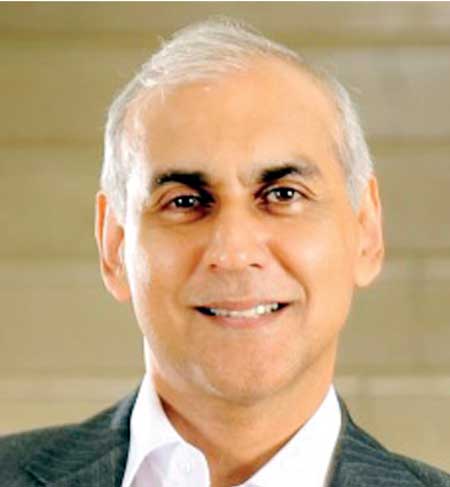Sunday Apr 20, 2025
Sunday Apr 20, 2025
Wednesday, 30 August 2017 00:00 - - {{hitsCtrl.values.hits}}

Ruchi Gunewardene, Managing Director of Brand Finance Lanka, deliberates on the common branding  thread that runs across the country and how it can be leveraged across sectors and businesses.
thread that runs across the country and how it can be leveraged across sectors and businesses.
With a landmass the size of Ireland, a population equivalent to the capital city of China, and a GDP which is significantly less than the revenue of the TATA Group, Sri Lanka is a small country.
This smallness however makes it relatively easy to manage, to bring about change, set up systems and the lack of remoteness makes most of the population accessible to products and services.
This is perhaps why in 1948 when the country got independence from the British, it was the envy of many and the model that Singapore used as a benchmark to emulate.
Over the years, Sri Lanka’s commerce has naturally reconciled itself to the limitations of the number of local consumers it can market to, the local raw material availability, skilled and unskilled workers and land availability. This has forced businesses not to consider marketing large volumes at low prices as a strategy when seeking bigger opportunities in global markets.
Sri Lanka’s leading export consumer brand Dilmah Tea, scrupulously avoids going down the discount route and has positioned itself at the top end of the tea market across the world.
Branding studies that we have carried out revealed how businesses used this same approach across varying industries, adopting a ‘less is more value’ approach to succeed globally.
The power of being small is often under estimated, and a better understanding of how Sri Lankan businesses used this for success will enable others to follow suit when considering branding and marketing initiatives that they may need to make in the future. Even in attracting foreign direct investments (FDIs) being a small country has many advantages because the scale of investment required is limited. Besides scale, the relative isolation often makes it the perfect pioneering test bed, as we will see. These factors should play a key role in the marketing efforts of the country at sector or at the level of the individual business.
In 1989 Sri Lanka was the first country in South Asia where mobile telecommunications were launched by a Swedish company called Millicom. It was perfect from that company’s point of view primarily because of the scale, the accessibility and the availability of mobile telecommunication could be rapidly developed across the country without the logistical challenges that a large country would pose for investors.
The pioneering mobile network Celltel which quickly gained a foothold and market leadership was over taken by Dialog following the change from analog to digital technology. Dialog continued this pioneering spirit and became the first mobile operator in South Asia to test and commercialise 4G and 3G technologies, with 5G just getting underway.
In the wake of dismantling the Multi Fibre quota system in the early 2000s the apparel industry was in need for branding the sector for global marketing. Having been entrusted with this task, Brand Finance findings revealed that Sri Lanka had a relatively mature industry when compared to some of the closest alternative sources of supply and were forced to move away from a pure price and volume offering because of the higher labour costs. Whilst labour, welfare, working conditions and compliance costs were increasing the industry was moving towards even greater social responsibility and environmental sustainability, which perfectly lent to positioning it as being an ethical manufacturer which was reflected in the ‘Garments Without Guilt’ brand idea. This move away from being the cheapest source was led by the three main industry leaders Brandix, MAS and Hirdramani Group which have collectively enabled Sri Lanka apparel being firmly put on the global map for apparel sourcing.
In other export manufacturing, a similar trend is seen, where products are positioned to the higher end of the market. Examples would include Haycarb’s activated carbon which uses coconut shells as its raw material base. This is a high end product which commands a premium price within a sector which is dominated by lower cost activated carbon from coal. Similarly, Dipped Products household and industrial rubber gloves which cater to the discerning US and European markets with high quality products is another good example. Lanka Harness which manufactures specialised impact sensor switches for seat belts and air bags to world renowned automobile brands is another specialist high value exporter.
In tourism marketing too, the compactness of the country is a key consideration and an important point of differentiation relative to other travel destinations. In fact, one of the many unfathomable mysteries of Sri Lanka is how it manages to squeeze so many different experiences into such a small area.
The $ 1 billion IT industry is primarily made up of small teams of highly-skilled people adept at solving problems. The BPO industry does not work on the scale of thousands of seats as is the case in India, but is more comfortable with a few hundred, because of the lack of supply of qualified people. The industry has therefore evolved into one which consists of small but specialised teams.
This is taken advantage of by companies such as HSBC and Moody’s Analytics which have located their more complex operations or service more high-end customers from Sri Lanka. Then there is the highly successful Millenium IT, which was bought by LSE (London Stock Exchange) purely because of its specialised services to stock exchanges across the world. A similar situation is seen at Sysco Corporation which is a food distribution company in USA, which has a small specialised IT service and R&D centre in Sri Lanka. And then there is SimCentric which provides complex solutions that specialises in advanced battle field simulation which has clients and working partnerships across industries and military communities including the US Department of Defense and NATO stakeholders.
All of these examples illustrates that Sri Lanka is perfectly poised to use its small scale to offer high end products and services to global markets interacting with more sophisticated industries and higher end consumers. The spectrum of options that could be leveraged are immense and need to go beyond the traditional sectors. We should be working hard on scientific breakthroughs such as what SLINTEC (a public private partnership with the founding private sector partners being MAS, Brandix, Dialog, Loadstar and Hayleys) is currently working on, or even venture into more creative fields such as architecture and design.
There is much inspiration that can be drawn from the pioneering success of Geoffry Bawa who developed his ideas of design from the country’s rich and varied culture, who arguably became the most influential Asian in his generation and is the force behind the concept ‘tropical modernism’ in architecture.
The opportunity to leverage the attributes of being small, agile, flexible, innovative, exclusive or specialised should not be underestimated as industries, companies and individuals brand their products and services to global markets or bring investments into the country. However, this cannot be an ad-hoc process and needs to be strategically built into the brand ethos and culture of the enterprise.
Whatever their mission, they can more often than not, use the countries core strength of being small, which is a big asset that brands can leverage on.
Discover Kapruka, the leading online shopping platform in Sri Lanka, where you can conveniently send Gifts and Flowers to your loved ones for any event including Valentine ’s Day. Explore a wide range of popular Shopping Categories on Kapruka, including Toys, Groceries, Electronics, Birthday Cakes, Fruits, Chocolates, Flower Bouquets, Clothing, Watches, Lingerie, Gift Sets and Jewellery. Also if you’re interested in selling with Kapruka, Partner Central by Kapruka is the best solution to start with. Moreover, through Kapruka Global Shop, you can also enjoy the convenience of purchasing products from renowned platforms like Amazon and eBay and have them delivered to Sri Lanka.
Discover Kapruka, the leading online shopping platform in Sri Lanka, where you can conveniently send Gifts and Flowers to your loved ones for any event including Valentine ’s Day. Explore a wide range of popular Shopping Categories on Kapruka, including Toys, Groceries, Electronics, Birthday Cakes, Fruits, Chocolates, Flower Bouquets, Clothing, Watches, Lingerie, Gift Sets and Jewellery. Also if you’re interested in selling with Kapruka, Partner Central by Kapruka is the best solution to start with. Moreover, through Kapruka Global Shop, you can also enjoy the convenience of purchasing products from renowned platforms like Amazon and eBay and have them delivered to Sri Lanka.